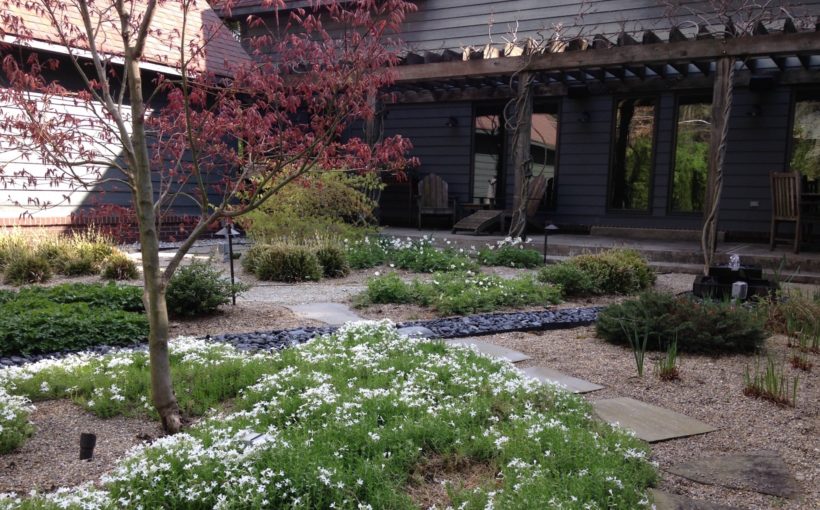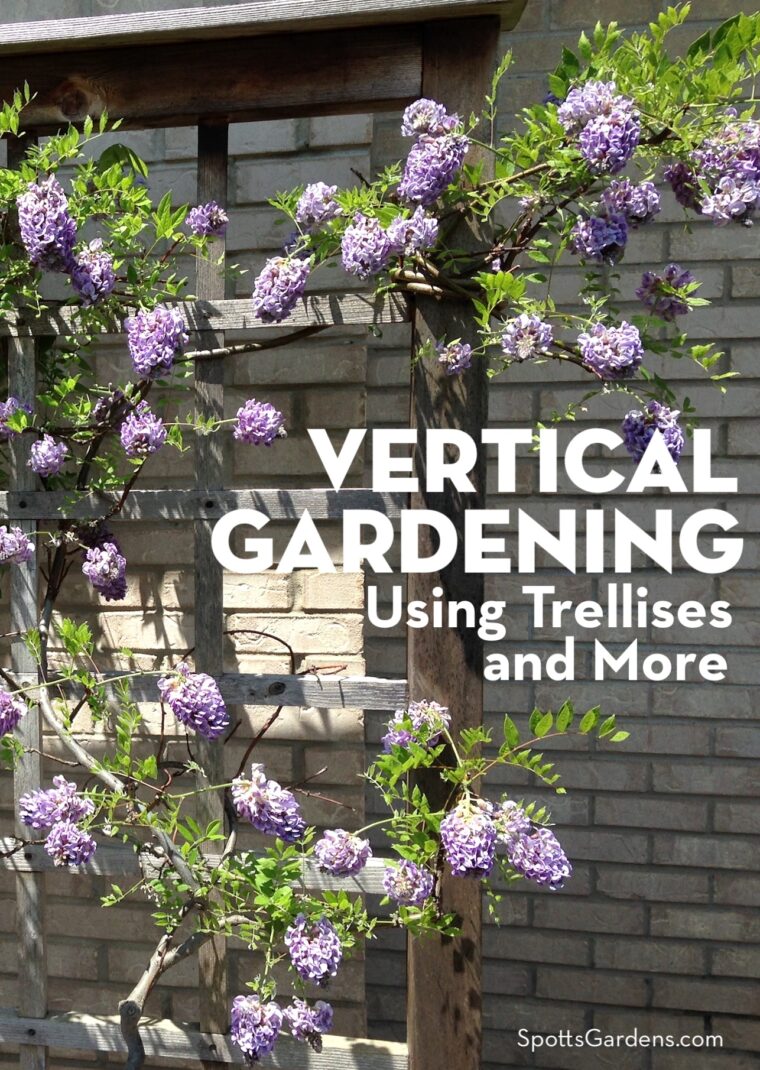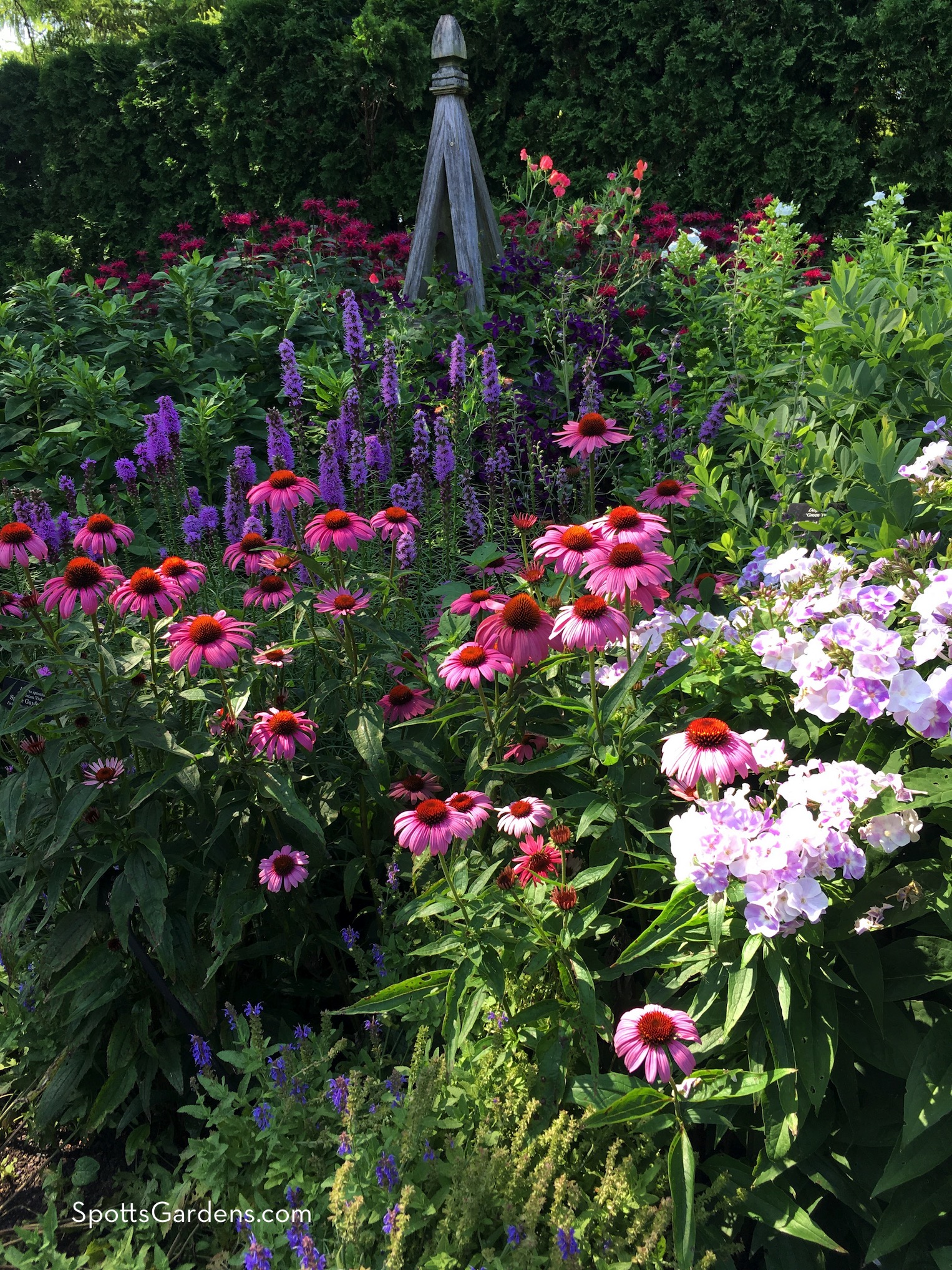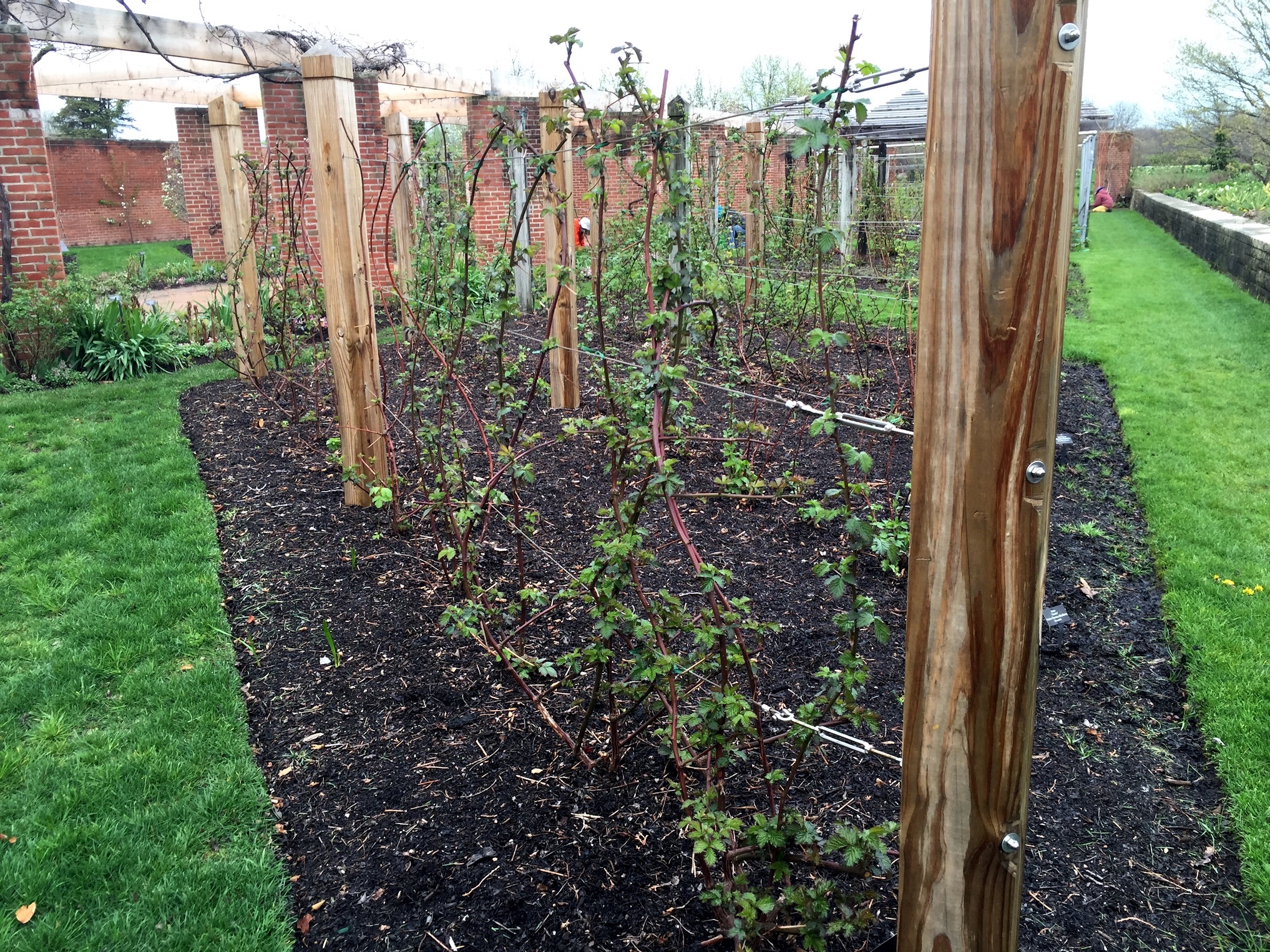No matter how large or small your garden, you can add height (and get more room to plant) with vertical gardening. Trellises, arbors, and pergolas get flowers and fruit up off the ground, add structure to the garden, and provide great focal points.
Teepees and Tuteurs
A tepee is just several poles lashed together and pushed into the ground. While they are often made from bamboo or willow poles, we’ve also seen metal and wooden versions. Pair them with plants that grow by winding or sending out tendrils, like beans, sweet peas, clematis, peas, or passionflower.
To give heavier vines more support, run horizontal lines of twine around the tepee poles. This turns your tepee into a “tuteur,” which is French for “to train” or “to guide.” Tuteurs, like the one below at Chicago Botanic Garden, are also lovely when planted with vining flowers or scarlet runner beans.
Trellises
Trellises can be free-standing (like the one in the title photo above) or attached to a wall or fence. Their main function is to support plants that grow through the openings, but they can also act as a divider or focal point in the garden.
We’re especially fond of wire trellis, which is strong enough to support plants but fades into the background. To make one, screw eyes into a fence, wall, or set of posts, then string galvanized wire between them. Attach wires to the eyes with turnbuckles, which let you tighten the tension in the wires. In the photo below, two rows of wires strung between the posts hold up raspberry canes.
Arbors and Pergolas
A small structure with sides and a top made of slats or lattice, an arbor creates a sheltered spot in the garden. You’ll see them most often as an arch or a gateway. Sometimes they include a bench. Arbors are a permanent garden feature and can’t be moved around like teepees can.
Larger than arbors, pergolas are structures that cover a patio or walkway (we show one in the photo at the top of this page). They may be freestanding but are more often built along the side of the house. A pergola makes a pleasant, shady spot. It can even act as a primitive form of air-conditioning; vines on the pergola shade windows during the growing season but drop their leaves to allow winter sun into the house.
Choose plants like grapevines, roses, honeysuckle, or wisteria to cover your arbor or pergola. (Wisteria requires an extremely strong arbor or pergola. It can easily pull down anything not sturdy enough.) In more casual or kitchen gardens, use gourds, string beans, or quick-growing annuals like morning glory for a quirky look.
If you’d like to add a vertical element to your garden, we can help! Contact us today.



